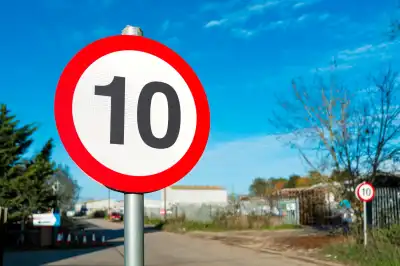
Thinking of selling your car? Whether you’re upgrading or just ditching the costs, you’ll want to get as much cash as possible for it. Good news: you don’t need to throw loads of money at it to make a big difference.
Sometimes, just taking better photos or digging out your paperwork can help boost the price. Here are 7 things worth doing before you stick it online – and a few mistakes to avoid.
1. Sort Out Any Warning Lights
Quick take: Buyers will notice that orange or red light on your dash – and they’ll use it to knock money off.
If your car flashes a warning light when you start it, get it checked before selling. Some issues are easy DIY fixes, like topping up oil or sorting tyre pressure (your manual will help). Bigger ones – like ABS or brake warnings – need a pro.
And always keep receipts for any repairs or servicing. It shows buyers you’ve looked after it.
2. Gather the Right Paperwork
Quick take: V5C, MOT history and service receipts = buyer confidence.
You don’t need a binder full of receipts, but do dig out the essentials:
- V5C (logbook)
- MOT certificates
- Service history and manual
- Receipts for any recent work
- Proof of finance being cleared (if relevant)
Lost your MOT certificate? You can download a new one for free on Gov.uk. And if something’s missing, ask your garage or the DVLA for help.
3. Check for Recalls
Quick take: You’re legally meant to mention active recalls – but fixing them is usually free.
You might not even know your car’s under a recall – they’re not always obvious. Use Regit's free recall checker to find out.
Just enter your reg. If it says “no recalls found” – great. If there is one, get it sorted for free at a main dealer and mention it in your ad.
4. Fix Scratches and Dents
Quick take: People do judge a book by its cover – so tidy up the cosmetics.
Even small scratches can make buyers think your car’s been neglected. You don’t need a full respray, but it’s worth:
- Using a scratch repair kit or touch-up pen
- Cleaning up the alloys (especially if they’re kerbed)
- Getting quotes for pro repairs if the damage is more serious – but don’t overspend on stuff that won’t add value
5. Check Your Tyres
Quick take: Bald tyres scream “expensive problem”.
Buyers will clock worn tyres instantly, so check the tread. The legal minimum is 1.6mm – but changing them around 3mm is safer.
Use the 20p trick: stick a 20p coin in the tread groove. If you can’t see the outer border, you’re good. Also look for bulges, cracks or uneven wear.
Got new tyres recently? Shout about it in your ad – it's a good selling point.
6. Deep Clean the Interior
Quick take: First impressions count – a clean car feels well cared for.
No one wants to sit in someone else’s crumbs. Empty the car, vacuum thoroughly (especially down the sides of the seats), wipe down high-touch areas like the steering wheel and gearstick, and freshen up the mats.
Use car-specific cleaners – harsh household stuff can damage plastics or upholstery.
You could get it valeted professionally, but a solid home clean can be just as good if you take your time.
7. Take Great Photos
Quick take: Blurry pics with a messy background? That’s a no from most buyers.
Use natural daylight and pick a clean, open background. Snap:
- Full exterior shots (front, back, both sides)
- Interior (seats, dash, steering wheel)
- Wheels and tyres
- The mileage on the dash
Brighten them up if needed, and take close-ups of anything you've fixed or upgraded.
Bonus: How Much Is Your Car Worth?
To get a ballpark figure:
- Try instant valuations on sites like Motorway
- Remember: asking prices aren’t always what people actually get, but they’re a decent guide
Selling a slightly older car? Check the maintenance schedule – it might be due for something major like a cambelt. If you don’t get it done, buyers might haggle the price down (or walk away). Spend smart and it could pay off.
Want your car to stand out online? Make it clean, honest and well-documented. You don’t need to spend a fortune – just a bit of effort and attention to detail.




